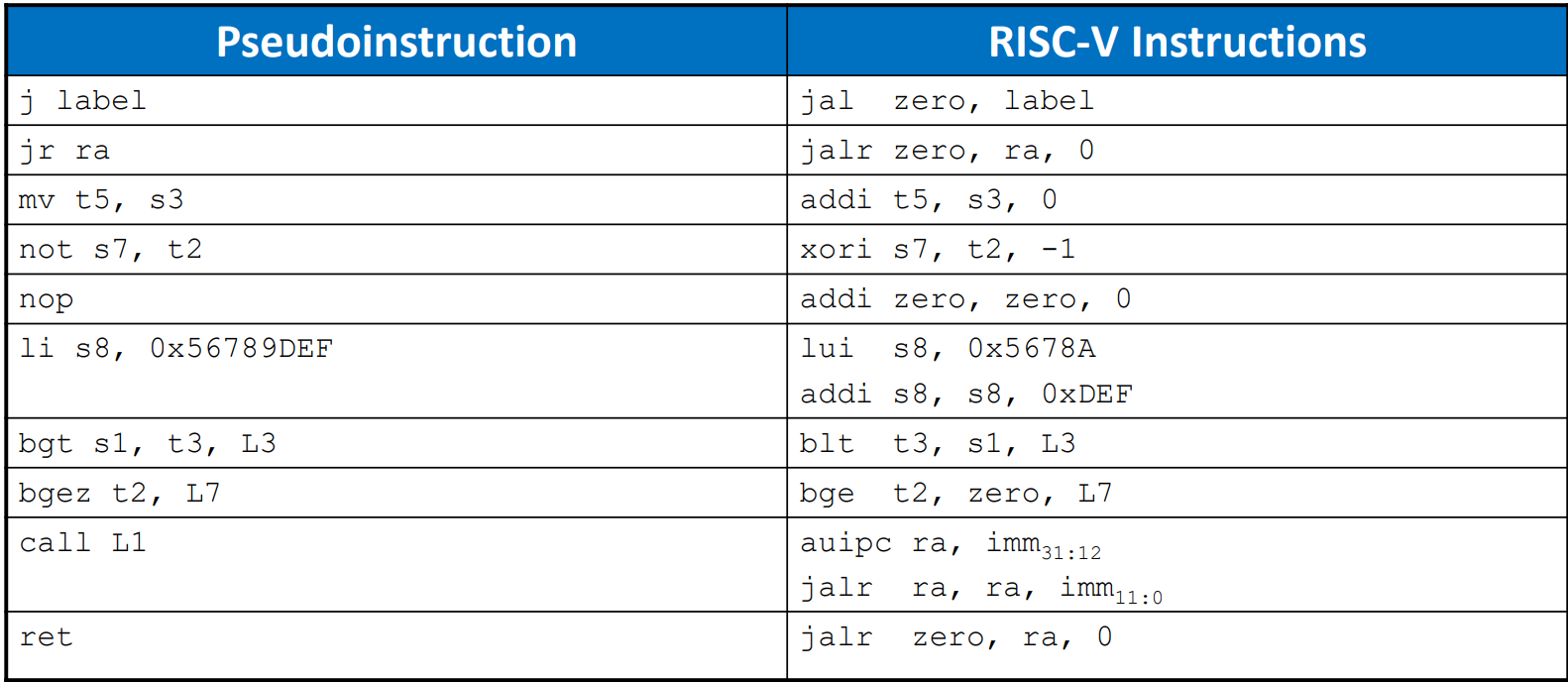Computersysteme
1/55
There's no tags or description
Looks like no tags are added yet.
Name | Mastery | Learn | Test | Matching | Spaced |
|---|
No study sessions yet.
56 Terms
Half Adder

Full Adder
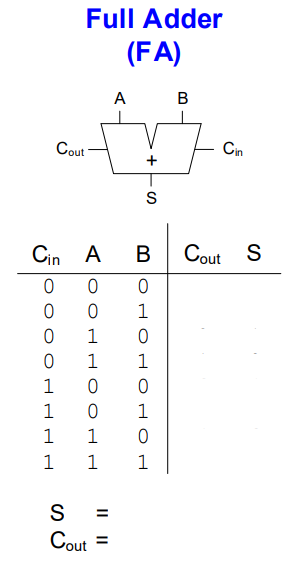
Carry Lookahead Adder Propagate

ALU Control
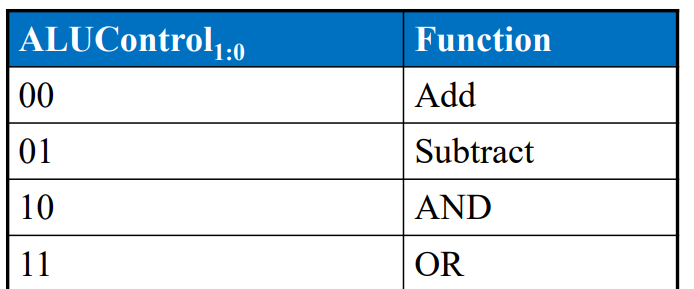
Wann ist bei der ALU die Flag Z gesetzt?
all of the bits of Result are 0
Wann ist bei der ALU C gesetzt?
Cout of Adder is 1 AND ALU is adding or subtracting (ALUControl is 00 or 01)
Wann ist bei der ALU das overflow Bit gesetzt?
ALU is performing addition or subtraction (ALUControl1 = 0) AND A and Sum have opposite signs AND A and B have same signs for addition (ALUControl0 = 0) OR A and B have different signs for subtraction (ALUControl0 = 1)
Wie werden bits im DRAM gespeichert?
In einer Kapazität.
DRAM Speicher
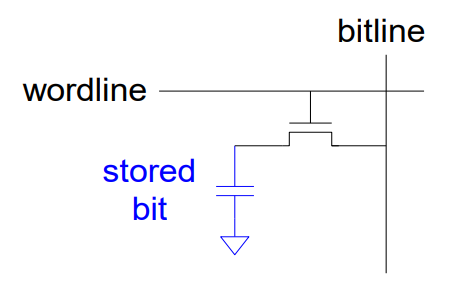
SRAM Speicher
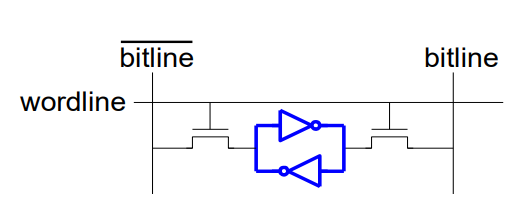
PLAs (Programmable logic arrays)
AND array followed by OR array
Combinational logic only
Fixed internal connections

FPGAs (Field programmable gate arrays)
Array of Logic Elements (LEs)
Combinational and sequential logic
Programmable internal connections
FPGAs Bestandteile
LEs (Logic elements): perform logic
IOEs (Input/output elements): interface with outside world
Programmable interconnection: connect LEs and IOEs
Some FPGAs include other building blocks such as multipliers and RAMs
LE’s (Logic Elements) bestehen aus:
LUTs (lookup tables): perform combinational logic
Flip-flops: perform sequential logic
Multiplexers: connect LUTs and flip-flops
Execution Time
= (#instructions)(cycles/instruction)(seconds/cycle)
CPI
Cycles/instruction
clock period
seconds/cycle
IPC
instructions/cycle = IPC
ALU Control erweitert
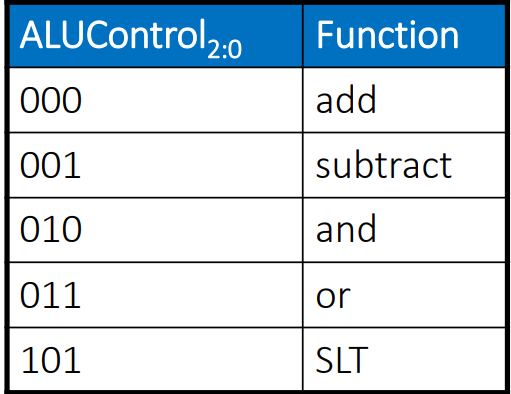
Single cycle Critical Path
𝑻𝒄_𝒔𝒊𝒏𝒈𝒍𝒆 = 𝒕𝒑𝒄𝒒_𝑷𝑪 + 𝟐𝒕𝒎𝒆𝒎 + 𝒕𝑹𝑭𝒓𝒆𝒂𝒅 + 𝒕𝑨𝑳𝑼 + 𝒕𝒎𝒖𝒙 + 𝒕𝑹𝑭𝒔𝒆𝒕𝒖𝒑
Multicycle critical path:
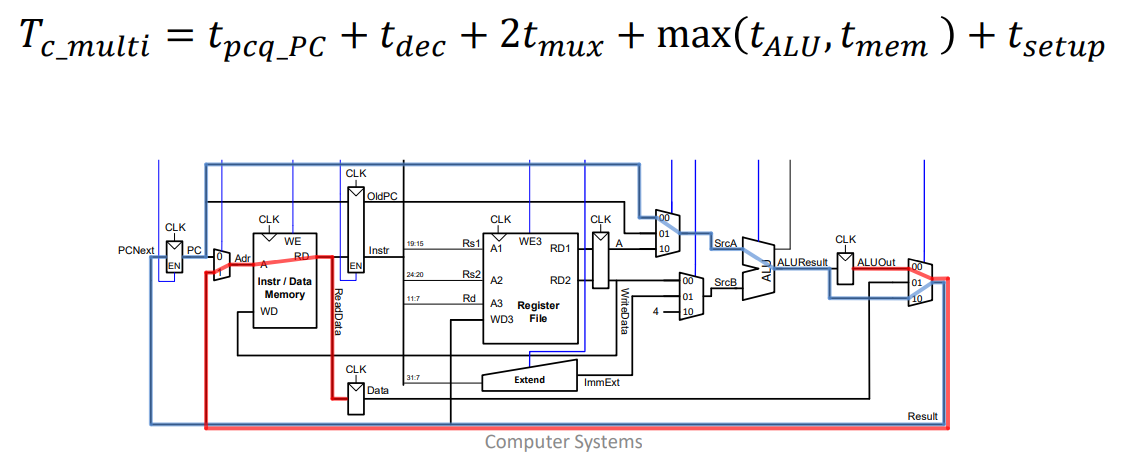
Temporal Locality:
Locality in time
• If data used recently, likely to use it again soon
• How to exploit: keep recently accessed data in higher levels of memory hierarchy
Spatial Locality:
• Locality in space
• If data used recently, likely to use nearby data soon
• How to exploit: when access data, bring nearby data into higher levels of memory hierarchy too
Hit Rate

Miss Rate

Capacity Cache
Number of data bytes in cache
Block Size
Bytes of data brought into cache at once
Number of Blocks
Number of blocks in cache
𝐵 = 𝐶 /b
Degree of associativity (𝑵)
Number of blocks in a set
Number of sets (𝑺)
Each memory address maps to exactly one cache set
𝑆 = B / N
Direct Mapped
1 block per set
N-way set associative
N blocks per set
Fully associative
all cache blocks in 1 set
LRU (Replacement policy)
the least recently used block in a set evicted
„Am längsten nicht verwendet“
Complex to implement
LFU
the least used used block in a set evicted
“Am wenigsten verwendet”
A frequently referenced page is only replaced after many misses and thus blocks the cache
Reference bit
it is a approximated versions of Least Recently Used (LRU)
A bit is set on access and cleared in time intervals
Write hit: Write through (cache)
update the cache AND update the main memory immediately
Pros: Data consistency with main memory guaranteed (I/O, multiprocessor)
simple
Cons:
Frequent accesses to the main memory
Loss of performance
Write-Hit: Copy-Back
refresh the cache AND marks the block "dirty" only update the main memory later when the block is removed from the cache
often also referred to as write-back
Pros:
Write hit is much faster
Less frequent accesses to the main memory
Cons:
Data inconsistency with the main memory
Read miss is slower (due to copy-back)
A dirty block needs to be synced before replacing
N-Way set associative (Management data/bits)
Tag
Valid Bit
(Dirty Bit)
Bits for Replacement Policy
Number of Blocks:
Number of Sets * Ways
Direct Mapped (Management Data Bits)
Tag
Valid Bit
(Dirty Bit)
Page Size
amount of memory transferred from hard disk to DRAM at once
Page table
lookup table used to translate virtual addresses to physical addresses
Adress Translation
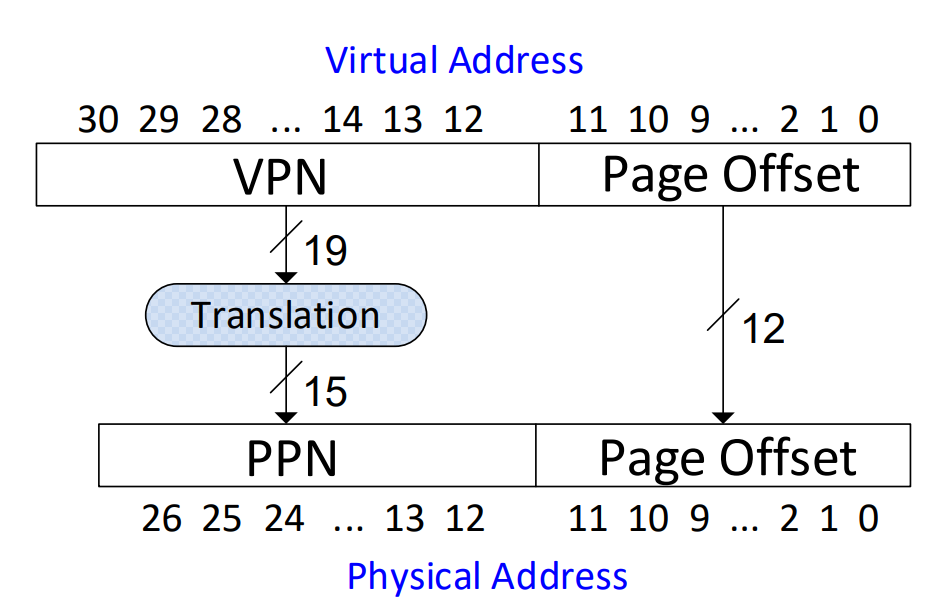
Virtual Pages Example:
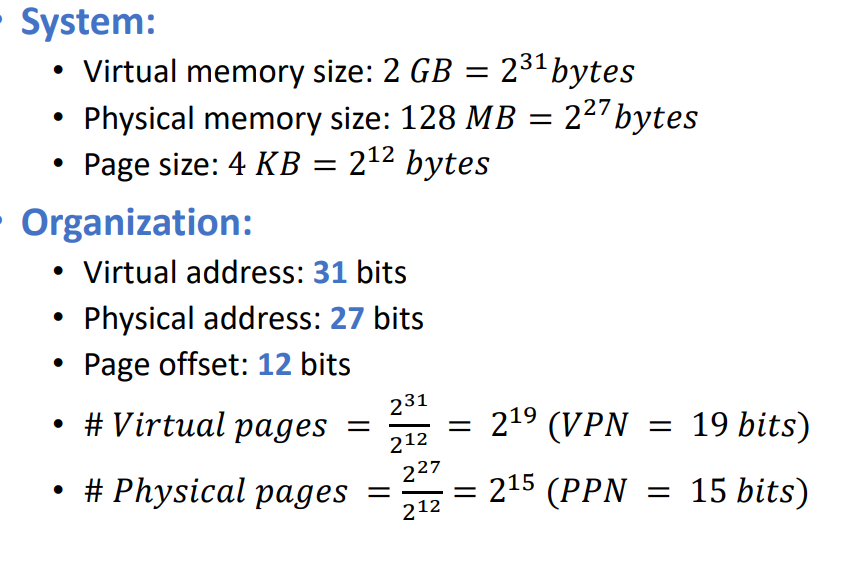
Page Table Organisation
Entry for each virtual page
Entry fields:
Valid bit: 1 if page in physical memory
Physical page number: where the page is located
What is VPN ?
index into page table
Control Hazard
When the flow of instruction addresses is not sequential
Unconditional branches (jal, jalr)
Conditional branches (beq, bne, ...)
Exceptions
Branch Target Buffer

CPI (Rechnung)
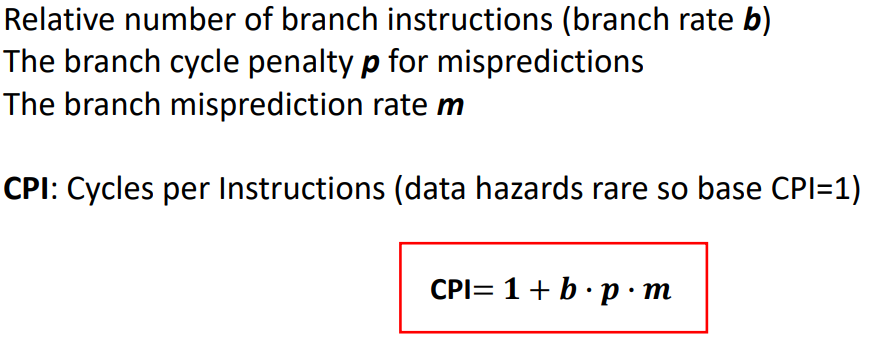
Dynamic Branch Prediction: 1-Bit Predictor

2-Bit Predictor:

2-stage Multiplier
^
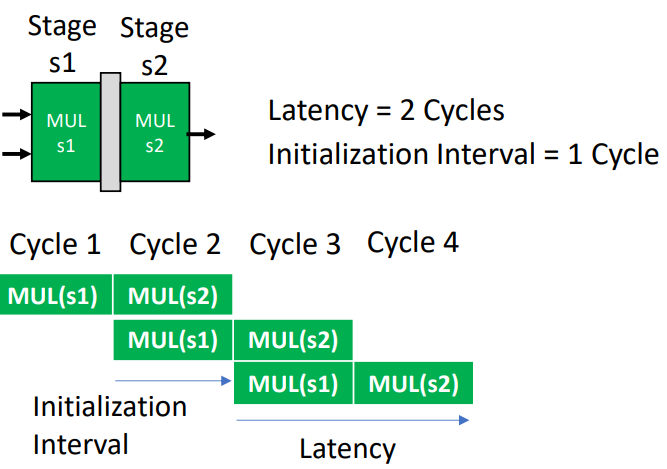
Steps in Out-of-Order Execution (Simpler Scheme 2**)

Pseudo Instructions
